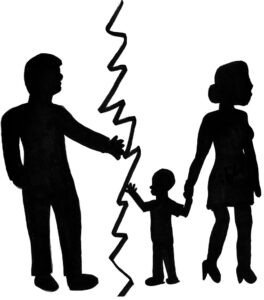The Controversy and Discourse Surrounding Article 370
Written by Meher Makwana
Introduction
On October 26th, 1947, Maharaj Hari Singh, the last ruler of Jammu and Kashmir signed the Instrument of Accession acceding to the Dominion of India. The Maharaja agreed to allow the Indian government to govern three subjects of the state: Foreign Affairs, Defense and Communication. On January 26th, 1950 when the constitution of India came into force, the conditions laid down in the Instrument of Accession were taken into consideration with article 370 being part of XXI, added to set three board frameworks and India would not make laws in Jammu and Kashmir outside the scope set out by the Instrument of Accession without the concurrence of its government. The Maharaja then agreed to allow the Indian government to govern three subjects of the state: Foreign Affairs, Defense and Communication. After five years of process by the Constituent Assembly which was formed for Jammu and Kashmir, the constitution came into force in 1956.
Article 370 was a temporary provision of the Constitution that gave Jammu and Kashmir a special status until 2019 wherein the president issues an order for the presidential rule in the state with it presumed that the state governor gave such a concurrence, it also introduced an order for amending the meaning of the constituent assembly, where the provision was repealed through a presidential order on the recommendation of both the houses of the parliament. Jammu and Kashmir is bifurcated into two union territories with one being Ladakh without its legislative assembly whereas Jammu and Kashmir has its own legislative assembly. The temporary provisions with respect to the state of Jammu and Kashmir are as follows;
- Notwithstanding anything in the Constitution,-
- The provision of Article 238 shall not apply in relation to the State of Jammu and Kashmir;
Article 238 deals with the application of the provision of Part VI to states in Part B of the First Schedule. Which was later omitted by the constitutional amendment to implement the recommendations of the states on a linguistic basis.
2. The power of parliament to make laws for the said state shall be limited to
- Those matters in the union list and concurrent list in consultation with the Government of the state and matters specified in the instrument of the accession.
Government of the state means the person who is recognized by the president as the maharaja of Jammu and Kashmir acting on the advice of the council of ministers for the time being in the office dated March 1948.
- Such other matters in the lists as with the concurrence of the government of the state, the president may order.
- The provision of article 1 of this article shall apply in relation to the state;
- Such the other provision of this constitution( the Indian constitution) shall apply in the relation of that state subject to such expectation and modifications as the president may order specify.
The key question of the law is so far argued on behalf of the petitioners who have challenged the removal of the special status and downgrading and bifurcation of the state is: whether the status of the J&K had not become permanent after the constituent assembly refrained from any decision on article 370; whether the latter effectively prevents the union government from unilaterally altering the state’s relationship with India, whether what was considered a ‘temporary’ provision prior to work of the state’s constituent assembly had not become a permanent subsequently. The Supreme Court in 2020 refused to refer the matter to the larger constitutional bench as the petitioners stated that there exists a conflict between the rulings that had taken place in the Prem Nath Kaul which established the requirement of the constituent assembly approval before the president could excise the power and once the constituent assembly has dissolved the presidents’ powers too shall stand dissolved.
On July 3rd, 2023 the supreme court assigned the challenges to the abrogation of Article 370 to a new constitutional bench with the replacement of the CJIs and Justice Subhas Reddy with Justice Sanjiv Khanna. The petitioner senior counsel argued that since the Jammu and Kashmir constitution of 1957 did not provide for any mechanism to alter Article 370 only the J&K constituent assembly had power to do so. It was also argued that the parliament could not assume the role of the state legislature and unilaterally decide to truncate the provision, remove the state’s special status, and divide the state into two Union Territories. The council also cautioned against the parliament assuming the role of constituent assembly as it could lead to changes in the basic structure and fundamental rights.
The counsel also argued that there was a lack of consultations with the will of the people of Jammu and Kashmir with them ignoring their will.
The bench however expressed questioning whether a temporary provision could become permanent due to the absence of the state’s Constituent Assembly. They also emphasized that the Constitution is a dynamic document, subject to amendments and changes. The court further questioned the implications of the other constitutional amendments that applied various provisions of the Indian constitution to J&K constitution and the importance of following the prescribed procedure while enacting laws. The present government wanted to scrap the 370 and 37A to put the states on the same footing as the rest of India which today we could see have a great extent of success.
Conclusion
The Supreme Court’s examination of the issue surrounding Article 370 showcases the vibrancy of the Indian constitutional democracy. The spirited debate while questioning the assumptions and seeking clarity, underscores the strength and dynamism of the Indian Constitution.
In connection to it, my own view is as it is pointed out in Article 1(1) of the Indian constitution that India is a ‘Union of State’. Thus, India is not a confederation of states but a union of states and thus no state has the right to secede from it. Therefore the abrogation and dissolution is a need of that hour which the government thoroughly understood and implemented.
Keywords: The Controversy and Discourse Surrounding Article 370




